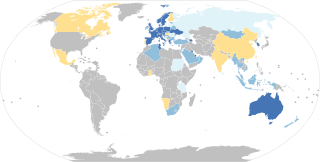
Advertising is the practice and techniques employed to bring attention to a product or service. Advertising aims to put a product or service in the spotlight in hopes of drawing it attention from consumers. It is typically used to promote a specific good or service,but there are wide range of uses,the most common being the commercial advertisement.

A television advertisement is a span of television programming produced and paid for by an organization. It conveys a message promoting,and aiming to market,a product,service or idea. Advertisers and marketers may refer to television commercials as TVCs.
A public service announcement (PSA) is a message in the public interest disseminated by the media without charge to raise public awareness and change behavior. In the UK,they are generally called a public information film (PIF);in Hong Kong,they are known as an announcement in the public interest (API).

The Korean Broadcasting System is the national broadcaster of South Korea. Founded in 1927,it is one of the leading South Korean television and radio broadcasters.

RoadShow is the first "Multi-Media on-Board" (MMOB) service system on transit vehicles in Hong Kong. It was launched by The Kowloon Motor Bus Holdings Limited in December 2000. The MMOB business was taken over by RoadShow Holdings Limited in 2001 prior to its listing on the Stock Exchange.
An advertising agency,often referred to as a creative agency or an ad agency,is a business dedicated to creating,planning,and handling advertising and sometimes other forms of promotion and marketing for its clients. An ad agency is generally independent of the client;it may be an internal department or agency that provides an outside point of view to the effort of selling the client's products or services,or an outside firm. An agency can also handle overall marketing and branding strategies promotions for its clients,which may include sales as well.

SK Telecom Co.,Ltd.,abbreviated as SKT is a South Korean wireless telecommunications operator and former film distributor and is part of the SK Group,one of the country's largest chaebols. It leads the local market with 50.5 percent share as of 2008. SK Telecom is the largest wireless carrier in South Korea,with 27.019 million subscribers as of Q4 2017.

Munhwa Broadcasting Corporation is one of the leading South Korean television and radio broadcasters. Munhwa is the Sino-Korean word for "culture". Its flagship terrestrial television station MBC TV broadcasts as channel 11.
Copywriting is the act or occupation of writing text for the purpose of advertising or other forms of marketing. Copywriting is aimed at selling products or services. The product,called copy or sales copy,is written content that aims to increase brand awareness and ultimately persuade a person or group to take a particular action.

Advertising management is how a company carefully plans and controls its advertising to reach its ideal customers and convince them to buy.

Dentsu Inc. is a Japanese international advertising and public relations joint stock company headquartered in Tokyo. Dentsu is the largest advertising agency in Japan and the fifth largest advertising agency network in the world in terms of worldwide revenues.
In the United States,commercial radio stations make most of their revenue by selling airtime to be used for running radio advertisements. These advertisements are the result of a business or a service providing a valuable consideration,usually money,in exchange for the station airing their commercial or mentioning them on air. The most common advertisements are "spot commercials",which normally last for no more than one minute,and longer programs,commonly running up to one hour,known as "informercials".
Retail media is marketing to consumers at or near their point of purchase,or point of choice between competing brands or products. Common techniques include in-store advertising,online advertising,sampling,loyalty cards and coupons or vouchers.
Mobile television is television watched on a small handheld or mobile device,typically developed for that purpose. It includes service delivered via mobile phone networks,received free-to-air via terrestrial television stations,or via satellite broadcast. Regular broadcast standards or special mobile TV transmission formats can be used. Additional features include downloading TV programs and podcasts from the Internet and storing programming for later viewing.

The South Korean mass media consist of several different types of public communication of news:television,radio,cinema,newspapers,magazines,and Internet-based websites.

The radio technology known as Digital Audio Broadcasting,and its TV sibling,Digital Multimedia Broadcasting (DMB),is being operated in several regions worldwide,either in the form of full services,or as feasibility studies.

Digital multimedia broadcasting (DMB) is a digital radio transmission technology developed in South Korea as part of the national IT project for sending multimedia such as TV,radio and datacasting to mobile devices such as mobile phones,laptops and GPS navigation systems. This technology,sometimes known as mobile TV,should not be confused with Digital Audio Broadcasting (DAB) which was developed as a research project for the European Union.

The history of advertising can be traced to ancient civilizations. It became a major force in capitalist economies in the mid-19th century,based primarily on newspapers and magazines. In the 20th century,advertising grew rapidly with new technologies such as direct mail,radio,television,the internet and mobile devices.

Soumitra ‘Sunny’Saha has been Senior Vice President and Managing Director of Turner Broadcasting System’s Southeast Asia Pacific business,and the General Manager of its Kids networks in Asia Pacific.
TV advertisements by country refers to how television advertisements vary in different countries and regions.













